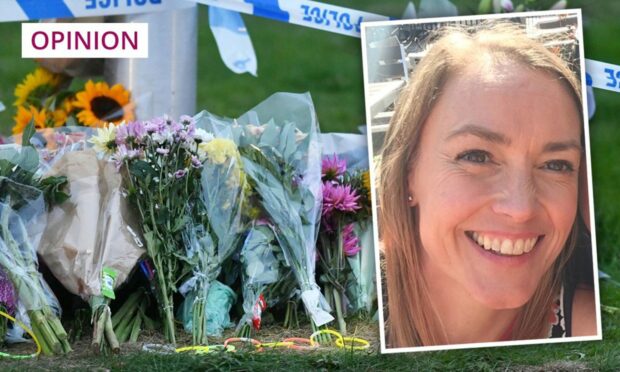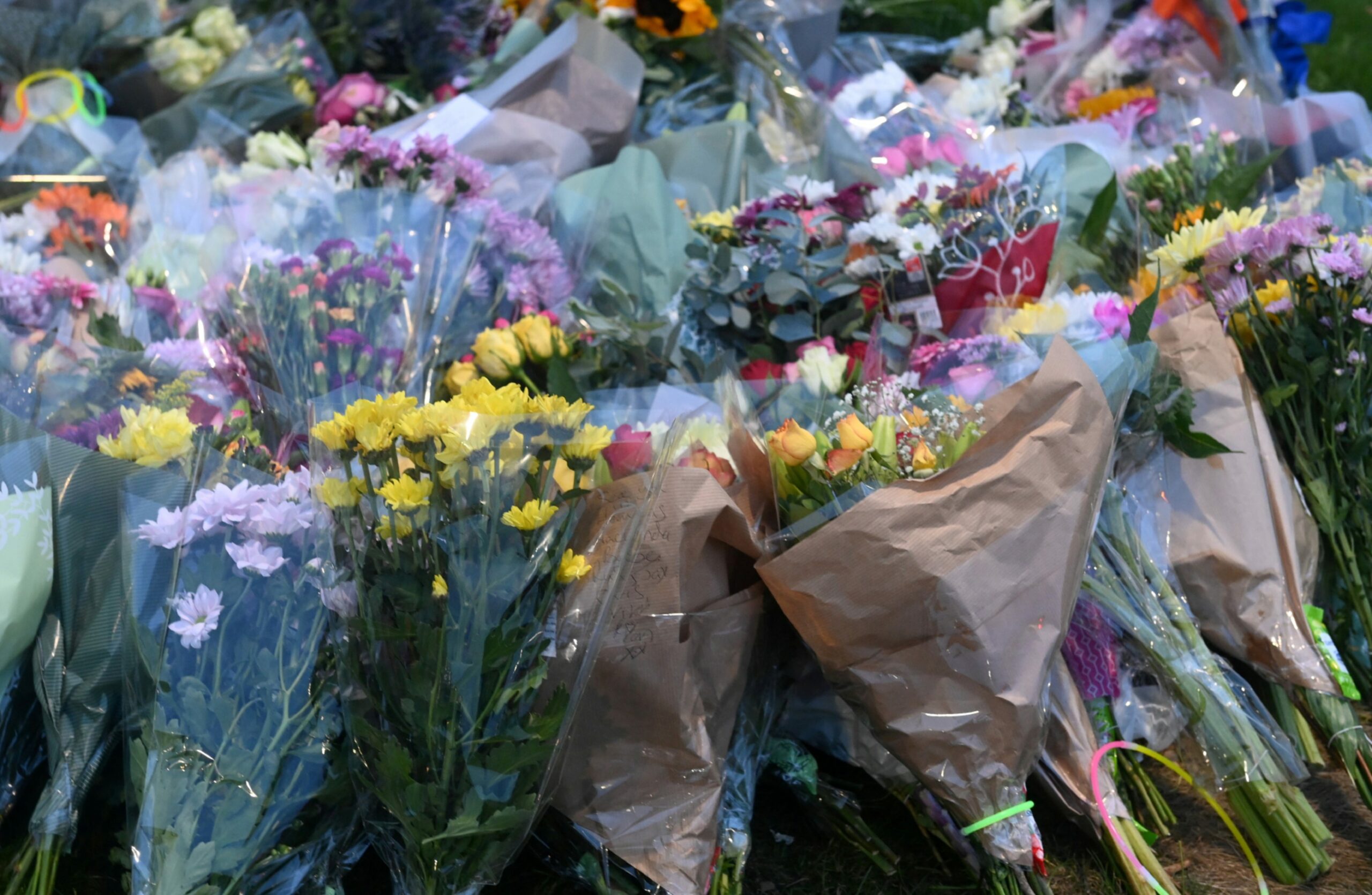Jill Barclay’s rape and murder is the most chilling case I’ve ever covered as a crime reporter – I will never forget it.
That’s partly because it feels like just yesterday when I was called out to work at the crime scene, on my birthday.
On that day, I was celebrating my life while having to write about a woman who’d lost hers, and the irony was not lost on me.
I had a long and hard day ahead of me – journalists have feelings too, I’m only human – but I found comfort in knowing that I would end my shift by being able to go home to family.
But Jill never reached the safety and security of her front door, and her loved ones haven’t seen her since the 47-year-old mother of two left the house for a night out with friends.
As Jill walked home alone, she was followed by the monster who beat and raped her, then burned her alive using a can of petrol. Her body was so badly damaged that it wasn’t possible for relatives to see it and Jill was, instead, identified by her distinctive tattoos.

Why a man whose name we no longer need to mention felt he could take possession of Jill, who belonged to no one but herself, and do whatever he wanted, I will never understand.
I don’t know about you but, since Jill’s death, I’ve been left feeling angry, confused and concerned about the vulnerability of my nearest and dearest when they go out into this unpredictable world we live in.
I’m reminded of it every time I drive to work through Dyce, and pass the roundabout where Stoneywood Road meets Victoria Street. More than eight months after Jill Barclay was killed, tributes are still being left in her memory, where she died, at the derelict residential premises of Farburn Gatehouse in Dyce.
We owe it to Jill to never forget – and tell the whole truth
Even the killer’s own defence lawyer said that his client’s victim showed “a determined and brave effort to defend herself” against the man’s “drastic” actions. So, I think we owe it to Jill to make sure that we never forget her, or what was done to her.
Although the details of her final moments are distressing, when reporting on Jill’s case, it felt right not to diminish her suffering by appearing to tone down her ordeal just for the sake of sensitivity. I feared doing so would make readers – and even myself – feel The Press & Journal and Evening Express had done a disservice to Jill.
Our society is sick with a sweeping illness – an epidemic of violence against women – that continues to infect our everyday lives, showing no sign of going away any time soon. To fix this problem, we can’t hide away from hearing the true scale of the horrors lurking on our streets.
I’ve seen some outrage directed toward me for publishing a profile of Jill’s deadly aggressor. Some people have commented on social media, referring to my investigation into the man’s background as “disgusting, disappointing and frankly awful”.
They’ve branded it “terrible journalism”, and called for me to stop “humanising” him.
I hear you. But, please, hear me now.
Charlie, that’s very kind and thoughtful of you to check on me. Admittedly in the whole equation I’m least personally affected, but certainly still in the process of decompressing…currently considering whether writing an opinion piece on the matter might be a little therapeutic
— Bryan Rutherford (@BryanRutherford) May 25, 2023
Is it possible that understanding a murderer’s past behaviour might help to prevent future horrific deeds?
By going right back to the beginning of the killer’s life and working through it, I’ve been looking for any missed opportunities to pick up on early warning signs. The purpose of such a probe is to investigate whether where we are now was preventable.
So, as I sat behind the killer in the dock, I wasn’t surprised to hear the High Court in Edinburgh being told about his recent diagnosis of a “mental disorder”.
I’ve also picked up on people’s frustration, even anger, that everything I’ve written about Jill’s case has been behind a paywall. But, please, let me explain: this has not been about profiting from tragedy.
Creating informative and thought-provoking journalism takes time and requires resources. As I explained to a woman called Rachelle – who took to Twitter and appealed for help to find a free version of an article about Jill – paywalls cover this cost and keep readers supplied with the information they deserve.
In my view, this is a perfect example of public-interest local journalism worth paying for.
Look out for each other’s loved ones
Let me be very clear: no one other than Jill’s evil assailant is to blame for taking away her future and crushing the hopes and dreams of her partner of 20 years, her eight-year-old daughter, and her son, aged just six.
But I do wonder if that tragic night could have ended differently.
Although there were no eyewitnesses to the chilling assault, we learned during the court case that a dog walker heard Jill’s screams, as did more people at a nearby flat, but no action was taken.
And, before it was discovered to be Jill’s body, set alight, even an off-duty police officer (who had discovered and reported the fire) left the scene after being told by a Scottish Fire and Rescue Service operator that she didn’t need to remain there.
I’m not judging any of these people; I wasn’t there that night. Still, I feel the need to ask: should we be more inquisitive – always assuming the worst, just in case? Is it better to be safe than sorry?
Yes, calling the police could end up being a waste of time for them, but what if it saves a life? If we would expect a total stranger to look out for our loved ones and be there for them in their time of need when we can’t, we have to be prepared to do the same for others.
Silence will only let things stay the same
I have one last thing to say, and it’s to ask a favour of you.
Did you see the shocking results of The Press & Journal’s Aberdeen safety survey? It received responses from 452 residents or regular visitors to Aberdeen – nearly 63% identifying as female, and just over 34% male.
A staggering 90% of women feel that simply being a woman affects their personal safety in Aberdeen. And the survey has also uncovered a worrying number of people who’ve experienced disturbing behaviour, most commonly in the city centre.
Please write about this to your local councillor, let your MSP know, bring it to the attention of your MP
Around four in 10 (40.9%) have been followed or stalked, with a similar number of 137 people being on the receiving end of unwelcome touching (40.7%). A total of 45.7% of participants recalled experiencing unwelcome sexual advances. And other common occurrences have included people being leered or stared at (69.7%), receiving sexual comments or jokes (58.5%), and being catcalled or wolf-whistled (57%).
Let that sink in for a while – or, maybe you don’t need to, because you’ve had similar experiences.
So, here’s that aforementioned favour. Please write about this to your local councillor, let your MSP know, bring it to the attention of your MP, and give that feedback to Police Scotland whenever they ask for your views.
Silence will only let things stay the same.
Bryan Rutherford is a crime and courts reporter for The Press & Journal and Evening Express


Conversation